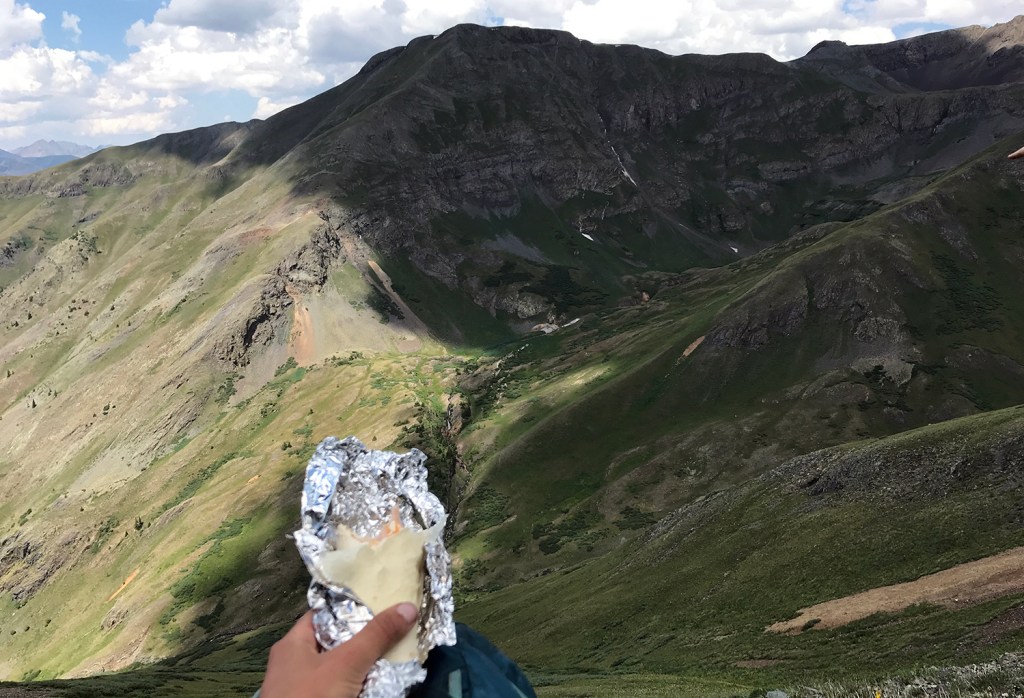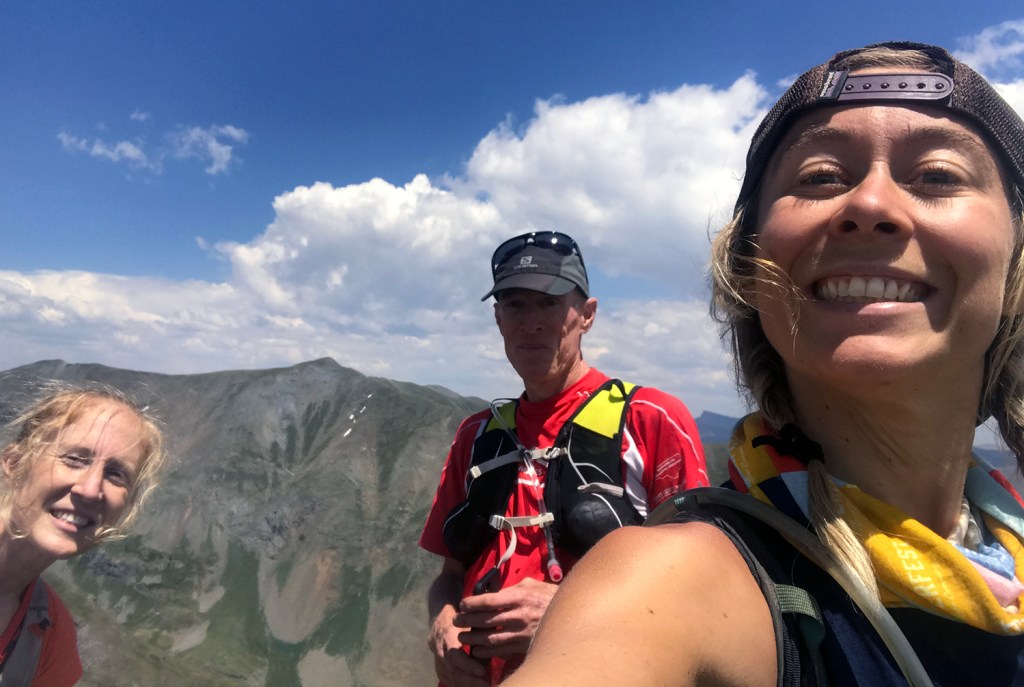“You’re not going to finish.” The words came from a tall, wiry man in his 60s named Scott. Four hours into the hardest race of my life deep in Colorado’s San Juan Mountains, these were truly the most encouraging words I’d heard all day. Finally, I could breathe a sigh of relief and give myself permission to lift any remaining expectations that I was going to make it to that finish line. Then, I kept climbing.
This is the John Cappis 50K Fat Ass, a mountain race so stout that only two people finished last year’s race. It starts in the town of Silverton, Colorado, elevation 9,300 feet, and covers 31 mostly unmarked, off-trail miles with 19,000 feet of climbing and a tight 19-hour cutoff time. Some of the best ultrarunners in the world can’t finish this race. I didn’t come to this year’s race, which took place July 7 and had 25 participants, to win or even finish—I came to be humbled, and it was working.
After Scott’s words of wisdom, I reminded myself to just enjoy being in the mountains. I looked back toward 13,336-foot Kendall Mountain in the distance and thought about how far I’d come. I’d already survived the challenges and risks that inherently come with being out in this type of terrain—perilous rockfall, the threat of thunderstorms, wild animals (two runners encountered a wolverine) and dangerous navigational errors. The endgame of this ordeal wasn’t finishing; it was simply making it out of the mountains in one piece.

The author takes a lunch break midrace above 13,000 feet. (Photo Credit: Morgan Sjogren)
The race is the vision of Rainshadow Running race director James Varner, and it’s named after Hardrock 100 race co-founder John Cappis, an ultrarunning pioneer who’s known for creating an event that challenges even the fittest, toughest and most talented competitors. (The Hardrock 100, which also takes place in the peaks above Silverton, kicks off in late July each year.) Varner named his version of the Fat Ass—an event style that evades Forest Service permitting by capping entrants at 75—after Cappis as much for his involvement in the original roots of U.S. ultramarathoning (including a third place at Western States in 1978 in under 20 hours) as his legacy for taking on massive runs through the San Juans.
“John is not running the trails anymore these days—he had a stroke a few years back and is not fully recovered. But a run like this is just the kind of thing he’d do all the time when he was younger and I’m sure that if he could, he would be the first to sign up,” said Varner.
In racing, the focus is so frequently on the end goal—crossing the finish line in a set amount of time—rather than the experience itself. But, I wondered, how often does that goal truly challenge us and push us into the unknown? So in this race, I decided to come to simply take a stab at the slim possibility of finishing but more realistically to see how far I could go. My only goal? Spend a day pushing myself in the mountains.
By the time I reached the top of 13,222-foot Macomber Peak, my legs were completely shot. I’d been climbing for more than two hours up nearly vertical terrain and I’d moved less than a mile and a half from the last aid station. I sat down to eat lunch next to new friends, Scott and Sarah, an ultramarathoner and a PE teacher who drove 25 hours straight from Tennessee to be here. A turkey and cheese burrito for me, energy chews for Sarah and a nut butter packet for Scott. An informal team, we scouted the descent beneath us and gazed ahead into the canyon at what appeared to be our next imposing climb.
“It takes a certain breed of human to be out here,” Scott said. “We are exposing ourselves to truly living, to the edge of our own existence. And it hurts, but would you look at the view?” I almost started to tear up. It’s hard to explain, but despite the pain in my lungs and legs, I felt incredibly happy and, well, alive.

Impromptu team Sarah, Scott and the author enjoy the views. (Photo Credit: Morgan Sjogren)
On the descent, we dashed through fields of wildflowers and sections of scree, then slowly began grinding our way up 13,246-foot Hancock Mountain. When we finally made it to the second aid station, 10 hours after our day had begun at 5am that morning, Sarah and I mustered our running legs to jog into the aid station, where Scott was cheering for us. We wouldn’t make the cutoff time—that was clear. But we both agreed, despite it being a Did Not Finish (DNF), that this was one of our proudest race moments ever. We had logged 15 miles over 10,000 feet of elevation gain and descent.
Back in Silverton hours later, we joined the growing number of people waiting at The Avon Hotel to see if anyone would finish. In the end, five hardy souls made it in the time allotted. Christof Teuscher, who took second place in 2017, won the event in 14 hours, 14 minutes, slashing 33 minutes from last year’s winning time, set by Michael Versteeg. Versteeg finished once again and tied for second with Canadian Ian MacNairn at 15 hours, 33 minutes. Silverton locals Ryan Marble and Anthony Culpepper also finished under the cutoff, in 16 hours, 11 minutes and 18 hours, 30 minutes, respectively.
Writer and runner Meghan Hicks made it well past the third aid station before calling it quits, setting a new standard for women in the event (to date, no woman has finished this race). “Big adventures require a more open definition of finishing, I think, and that’s coming back alive and well,” Hicks told me at the finish line.
So why did I sign up for a race I knew I probably couldn’t finish? Maybe I came here to put myself alongside other foolhardy and joyous people who understand that risking failure puts us in the path of success. I didn’t win, I didn’t even finish, but I finally found my edge. Without a doubt, I’ll be back to challenge it further next year.
